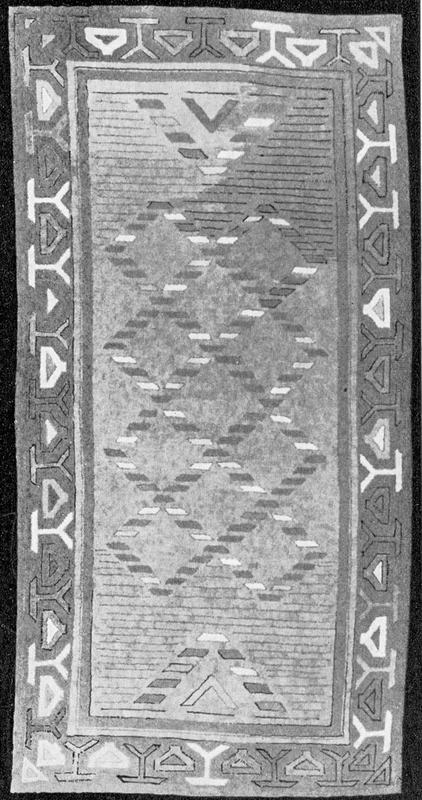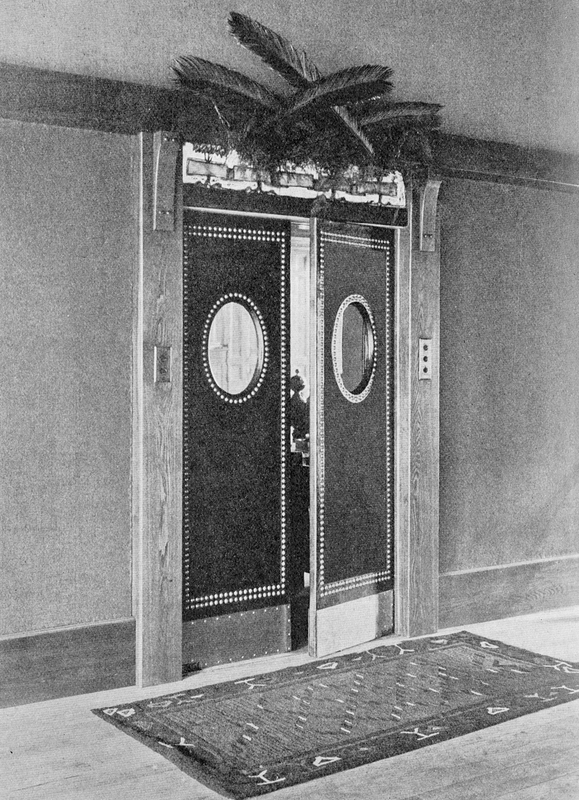Rug
Item
Title
Rug
Creator
Helen R. Albee (des.) for Abnakee
Date
1902 (ca.)
Medium
Wool, burlap
Description
In many ways, Helen Albee's Abnakee rugs were the eptiome of the handicraft aspect of the Arts and Crafts movement that combined traditional forms, original designs, an exceptional amount of hand work and innovative construction. Albee's hooked rugs departed from the standard rugs of the period, and her first struggle–after procuring the type of wool flannel she sought–was to convince the citizens of Tamworth, New Hampshire that these rugs could prove profitable for their community, and certainly more so than the rugs done in the local taste, which had failed to capture the eye of summer colonists, the main market for the small New Hampshire town. In her book, Abnákee Rugs: a Manual Describing the Abnákee Industry, the Methods Used, with Instructions for Dyeing (Riverside Press, 1909), she described somewhat derisively the situation she faced:
My simple conventional designs had not met with approval. I did not use bright colors; I wove no vines, no flowers into my rugs; no cats nor puppy dogs reposed on parti-colored folliage–in other words, I had not reached the standard of native taste.
An exhibition of her rugs and the subsequent sale of those offered (and requests for duplicates) soon convinced everyone that a rug making industry was useful for the town and could provide steady employment. From the selection of the wool flannel, to the dying of the fabric, to the designs of rugs themselves, Albee created an industry from the ground up. The chief difference between her rugs and traditional ones, as she described it, was the method of hooking and leaving some of the loops intact in the shearing process, as well as her method of working on the burlap backing that helped accentuate the velvety texture of the fabric and catch the light in different ways.
Described in a caption from the June 1906 issue of The Craftsman, this rug featured a "lattice design with Indian border" and was executed in "green, red, orange, brown, and black." While this was her first feature in the magazine, Stickley had already owned this rug by 1902, when he published a photograph of it outside the auditorium of his Syracuse Craftsman Building.
My simple conventional designs had not met with approval. I did not use bright colors; I wove no vines, no flowers into my rugs; no cats nor puppy dogs reposed on parti-colored folliage–in other words, I had not reached the standard of native taste.
An exhibition of her rugs and the subsequent sale of those offered (and requests for duplicates) soon convinced everyone that a rug making industry was useful for the town and could provide steady employment. From the selection of the wool flannel, to the dying of the fabric, to the designs of rugs themselves, Albee created an industry from the ground up. The chief difference between her rugs and traditional ones, as she described it, was the method of hooking and leaving some of the loops intact in the shearing process, as well as her method of working on the burlap backing that helped accentuate the velvety texture of the fabric and catch the light in different ways.
Described in a caption from the June 1906 issue of The Craftsman, this rug featured a "lattice design with Indian border" and was executed in "green, red, orange, brown, and black." While this was her first feature in the magazine, Stickley had already owned this rug by 1902, when he published a photograph of it outside the auditorium of his Syracuse Craftsman Building.
Credit line
Image from "Distinctive American Rugs: Designed and Woven in the Homes of Country Women," The Craftsman 10 (June 1906): 368.

